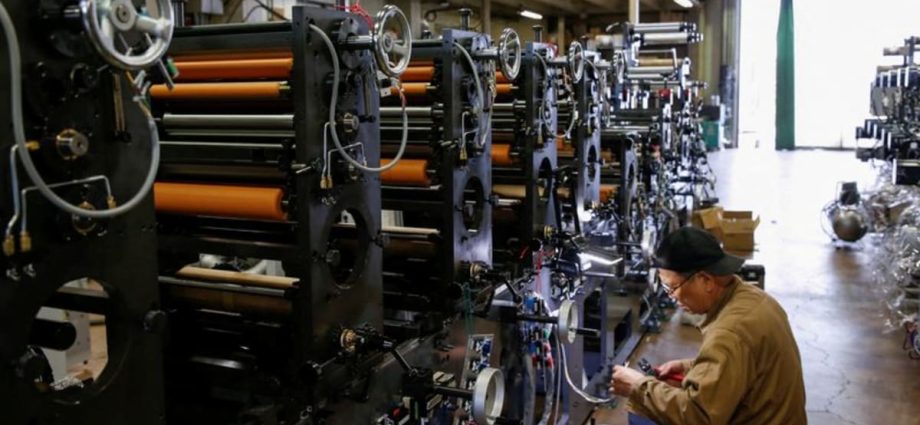
TOKYO: Japan’s factory output rose much less than expected in September, government data showed on Tuesday (Oct 31), as demand slowed significantly, adding to uncertainty hanging over the export-reliant economy’s outlook.
Industrial output rose 0.2 per cent in September from the previous month, data from the Ministry of Economy, Trade and Industry (METI) showed on Tuesday. The reading was worse than a median market forecast for a 2.5 per cent gain and followed 0.7 per cent drop in August.
Production machinery output fell 3.4 per cent in September from the previous month, dragged by sluggish manufacturing of industrial robots and metals. Both domestic and overseas orders for those products were significantly lower, a METI official said.
“Investment appetite has been declining due to the rising interest rates at home and abroad,” the official said.
Semiconductor manufacturing equipment output went up 13.2 per cent month on month in September, but the official said output for chips and electronic devices is unlikely to recover any time soon.
However, auto production rose 6 per cent after disruptions caused by a typhoon and system failures eased, the METI official said.
Japanese automakers reported strong domestic output for September, with Toyota Motor jumping 12.8 per cent and Honda Motor climbing 24.2 per cent year on year on Monday.
Manufacturers surveyed by the industry ministry expect seasonally adjusted output to rise 3.9 per cent in October and fall 2.8 per cent in November, sticking to its assessment of industrial output of “seesawing”.
“Demand for goods is expected to remain sluggish both domestically and overseas, and production is not in an environment for a major recovery,” said Kota Suzuki, economist at Daiwa Securities.
Separate data also showed Japanese retail sales rose 5.8 per cent in September from a year earlier, marking a 19th straight month of gains and roughly in line with the median market forecast for a 5.9 per cent increase.
Compared with the previous month, retail sales dipped 0.1 per cent in September following 0.2 per cent growth in August, the data showed.

